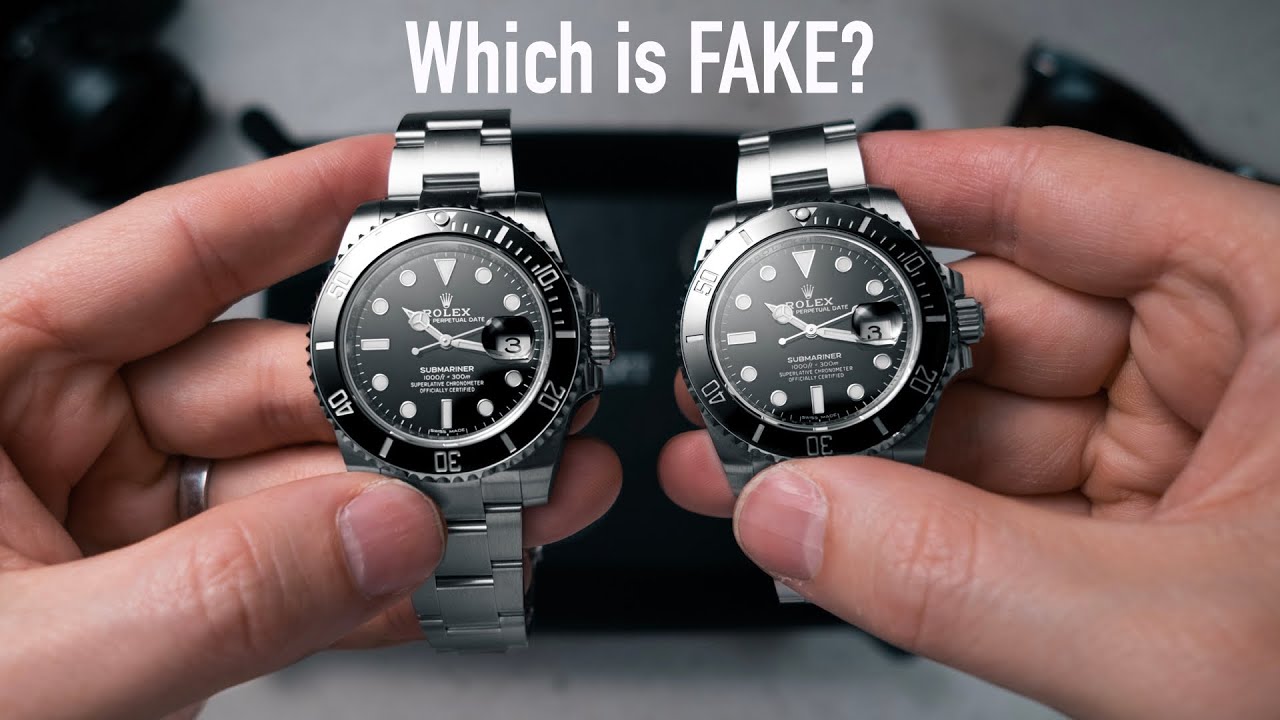
Counterfeiters are smart and adapt quickly. They target markets and choose the most popular models. They use sea containers, express cargo and small parcels for distribution.
The watch industry is the biggest victim of this counterfeit trade. It loses CHF 2 billion a year in foregone sales. Buyers aren’t naive; they know that they support a criminal business.
1. Know the Brand
Luxury watches are a favorite target for thieves and counterfeiters because they’re expensive, small and easy to hide. Thieves often steal them from distribution points, retailers and even the homes of wealthy collectors. They can then be sold on the black market, where they’re much more profitable than their original price tag. Counterfeiters use a variety of tactics to produce fakes including removing serial numbers, violating manufacturer contracts and reselling merchandise without permission. The result is a tangled web of illegal activities that costs the legitimate watch industry billions.
The counterfeit watch market is booming because there are many ways to make a good fake. In fact, the best counterfeits are so good that trained watchmakers have a hard time telling them apart from genuine models. In addition, there is a growing number of “superfake” watches being produced by master counterfeiters who specialize in high-precision, Swiss-like replicas. These doppelgangers are so sophisticated that they’re almost impossible to detect if you’re not familiar with the brands involved and their specifics.
In order to stop these counterfeiters, a strong brand protection strategy is essential. This includes having a digital anti-counterfeiting solution that can protect packaging and labels. AlpVision offers two versatile yet powerful solutions for protecting these types of products, Cryptoglyph and AlpVision Fingerprint. These anti-counterfeiting solutions use specialized technology to print thousands of microscopic holes in areas that are difficult for counterfeiters to replicate. For example, a watch certificate of authenticity would benefit from this type of protection.
As the world’s demand for luxury watches continues to rise, it’s important that we all do our part to combat counterfeiting. Counterfeiting not only hurts consumers, but it also devalues the entire product category and damages brand reputation. We need to strengthen intellectual property rights protection, improve border control measures and facilitate cooperation between law enforcement agencies and watchmakers to better fight the counterfeiting war.
If you want to learn more about how we can help with your brand protection needs, please contact us today. We have a team of experts ready to answer any questions you may have and help you protect your brand against counterfeiting.
2. Know the Model
While it may seem counterintuitive, Swiss watch makers actually have a bit of a problem with counterfeiters. Their names are all household brands with recognizable global appeal, making it easier for criminals to impersonate their products. As a result, fake watches reach unwitting consumers before brands, retailers, or distributors can stop them.
This makes enforcing genuine certificates of authenticity difficult and time consuming. It’s also a challenge to keep up with counterfeiters, who are constantly improving their lookalike watches. These improved editions are reissued, often with a list of specific improvements that make them closer to the authentic product. And of course, some fakes are simply made to look like the real thing.
Because the fake watch industry is so complex, it’s not as easy to put a halt to it as it would be with handbags or sneakers. This is because counterfeiters aren’t just copying a name and logo, they’re actually putting together an entire product. They’re crafting their doppelgangers into works of art that are incredibly difficult to spot for experts in the field.
In fact,’superfake’ watches are so high quality that even watchmakers have trouble telling them apart. These are the fakes that have gotten so good, that they can rival the quality of the real thing, and it’s these types of counterfeits that have a huge impact on sales and the reputation of genuine Swiss watchmakers.
The problem is that these’superfakes’ are being sold by legitimate sellers, and they’re being purchased by people who believe they’re getting the real deal. While some may shrug off these fakes as ‘lost business,’ the truth is that many shoppers are actively searching for and purchasing these counterfeits. And that’s a problem that needs to be addressed.
This is why the Federation of the Swiss Watch Industry has stepped up their anti-counterfeiting efforts. They’re training police officers and working with online marketplaces to shut down sites that are selling these products. They’re also launching campaigns to raise awareness amongst consumers. The problem is not going away, but by taking a few steps to protect themselves, consumers can help put a stop to this illicit trade.
3. Know the Materials
Like all luxury items, watchmakers spend a great deal of time and resources to create unique designs, innovative features and flawless quality. These craftsmen have gained a knowledge that comes from training, years of experience and the creative use of their talent. This intellectual property must be protected. Counterfeiters steal the work of real watchmakers and seek profit without any respect for the legal rights of the companies that developed the products. The purchase of a counterfeit watch supports this theft of intellectual property, a breach of national and international law.
The global trade in fake watches is a major threat to Swiss industry. In the last five years, it has cost Swiss manufacturers an estimated 3.6 billion dollars, equivalent to 2.3% of their sales. This figure does not include the costs of the lost brand reputation, loss of future business and damage to consumer confidence.
In order to ensure that only genuine products reach consumers, the Swiss watchmakers are working closely with customs officials worldwide and with online marketplaces to make sure that counterfeit watches do not appear on their sites. This is a complex task because the counterfeiters are often well organised and can quickly adapt to changing market conditions and new business models.
Counterfeiting is a serious issue that affects many industries. It deprives brands of their substance, threatens existing jobs and endangers the health and safety of consumers. It also finances criminal organisations involved in drug trafficking, money laundering and illegal gambling. In some countries it is even a crime to possess counterfeit goods, and fines and imprisonment may be applied for those infringing intellectual property laws.
As a result, the Swiss watchmakers are making efforts to raise awareness among consumers and to highlight the importance of purchasing only genuine products. A good example of this is the campaign “Don’t buy a fake”, launched in 2018 to encourage consumers not to support the counterfeit trade and protect their own image and that of the Swiss watch industry.
The fact is, the fake industry is growing rapidly. It’s not just Swiss watchmakers that have to deal with this problem, as fake products from other countries are also being produced in large quantities and sold on the internet. For example, a significant proportion of the fake watches come from China and Hong Kong.
4. Know the Warranty
Counterfeiting is a global problem that has reached epidemic proportions and not just for watches. It drains legitimate businesses of their sales and profits, deprives the world’s consumers of the products they are seeking out and supports criminal activity such as money laundering, extortion, counterfeit drugs and more. It also undermines the entire concept of trademark law, which is designed to protect something that has been built over generations.
Elaborate fake sites that impersonate prestigious Swiss watchmakers such as Rolex, Patek Philippe, Omega and Breitling are proliferating online and luring unsuspecting buyers in with rock-bottom prices on luxury watches. The sites are emblazoned with the actual logos and branding of the real brands but they are part of interconnected scam networks based overseas that are completely anonymous and lack transparency. These sophisticated scams are stealing images and content from authentic websites which further demonstrates their counterfeit nature.
Despite the huge investment that watchmakers make in marketing their products globally and working closely with customs officials in major markets, counterfeits still find their way to market. In 2018, the OECD estimates that global trade in counterfeits and pirated goods infringing Swiss intellectual property rights amounted to around CHF 7 billion, which represents 2.3% of genuine exports and costs right holders CHF 2 billion in foregone sales. Of this figure, watches occupy an unenviable first place, accounting for CHF 2 billion in lost sales.
The reasons for this are varied and complex. Unlike counterfeit handbags or shirts, which are purchased solely for their brand name, buyers of fake watches want to be seen with the latest fashion-forward model slung across their arm and the prestige that accompanies it. This has helped to create a culture of’superfakes’ that have sprung up around the world and are being driven by a whole generation of ‘die-hards’.
Regardless of the motivation for purchasing counterfeits, there are steps that can be taken by both sellers and buyers to avoid falling prey to them. By becoming educated about the various nuances of the watch industry, sellers and buyers can be better equipped to identify counterfeits when they see them. And by implementing strict anti-counterfeiting measures, both parties can work together to protect their interests and the reputation of the industry as a whole.

